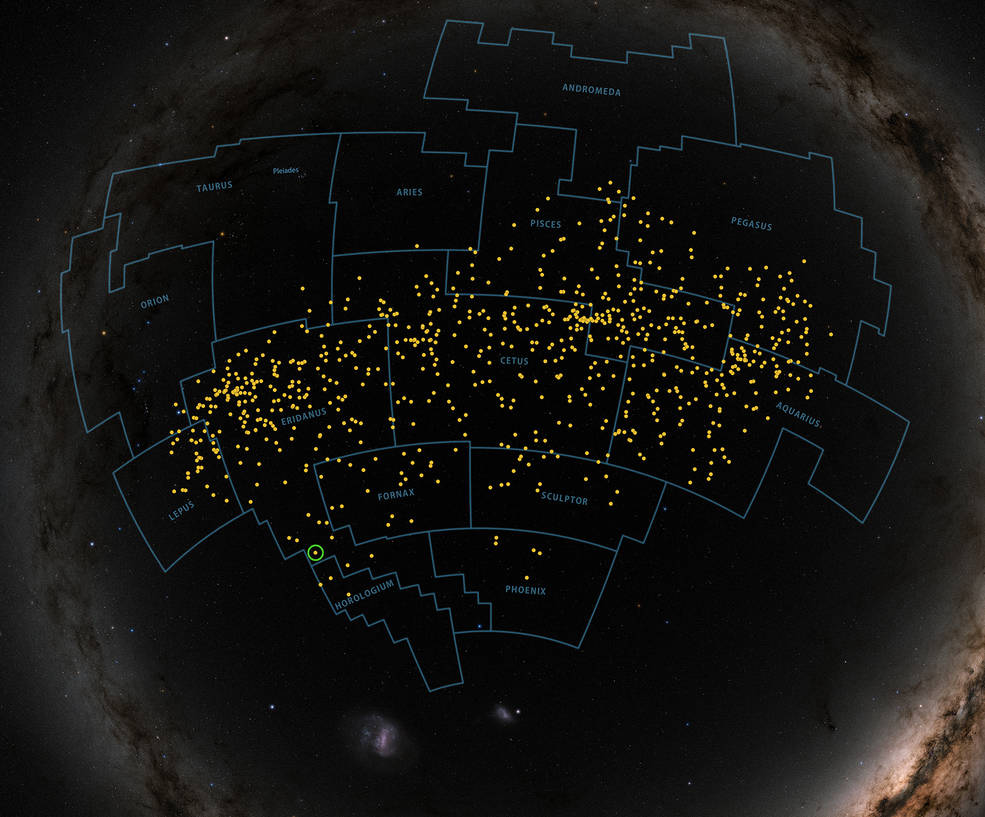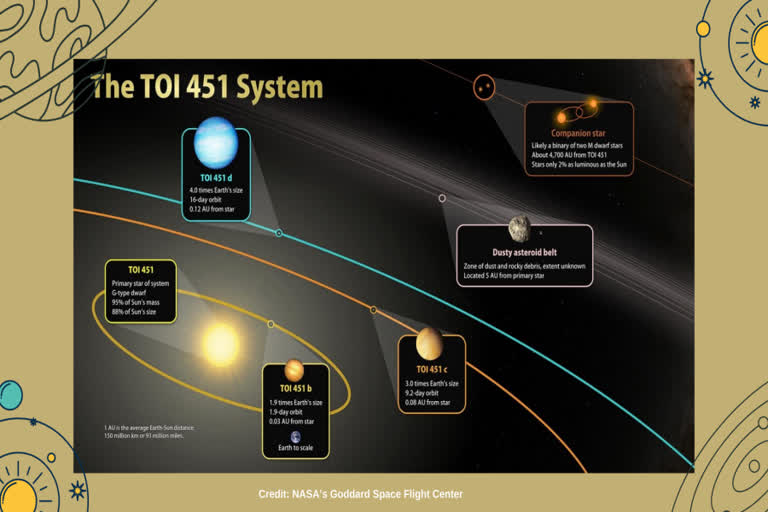Washington: The researchers at NASA believe that the newly discovered planetary system, TOI 451, detailed in The Astronomical Journal, will provide researchers with the rare chance to study a group of growing planets.
The planets were discovered in images taken by NASA's Transiting Exoplanet Survey Satellite (TESS) between October and December 2018.
Follow-up studies of TOI 451 and its planets included observations made in 2019 and 2020 using NASA's Spitzer Space Telescope, which has since been retired, as well as many ground-based facilities.
Archival infrared data from NASA's Near-Earth Object Wide-Field Infrared Survey Explorer (NEOWISE) satellite suggests the system retains a cool disk of dust and rocky debris.
Other observations show that TOI 451 likely has two distant stellar companions circling each other far beyond the planets.
"This system checks a lot of boxes for astronomers," said lead researcher Elisabeth Newton, Assistant Professor at Dartmouth College in Hanover, New Hampshire, US.
"It's only 120 million years old and just 400 light-years away, allowing detailed observations of this young planetary system. And because there are three planets between two and four times Earth's size, they make especially promising targets for testing theories about how planetary atmospheres evolve."
The young star TOI 451, better known to astronomers as CD-38 1467, lies about 400 light-years away in the constellation Eridanus.
It has 95 percent of our Sun's mass, but it is 12 percent smaller, slightly cooler, and emits 35 percent less energy.
TOI 451 b orbits every 1.9 days, is about 1.9 times Earth’s size, and its estimated mass ranges from two to 12 times Earth’s. The next planet out, TOI 451 c, completes an orbit every 9.2 days, is about three times larger than Earth, and holds between three and 16 times Earth’s mass. The farthest and largest world, TOI 451 d, circles the star every 16 days, is four times the size of our planet and weighs between four and 19 Earth masses.
Even TOI 451's most distant planet orbits three times closer than Mercury ever approach the Sun, so all of these worlds are quite hot and inhospitable to life as we know it. Temperature estimates range from about 1,200 degrees Celsius for the innermost planet to about 450 degrees C for the outermost one.
Astronomers expect planets as big as these to retain much of their atmospheres despite the intense heat from their nearby star. Different theories of how atmospheres evolve by the time a planetary system reaches TOI 451’s age predict a wide range of properties. Observing starlight passing through the atmospheres of these planets provides an opportunity to study this phase of development and could aid in constraining current models.

Also Read: NASA awards Firefly Aerospace $93.3M to deliver payloads to Moon
(Inputs from IANS+NASA)



